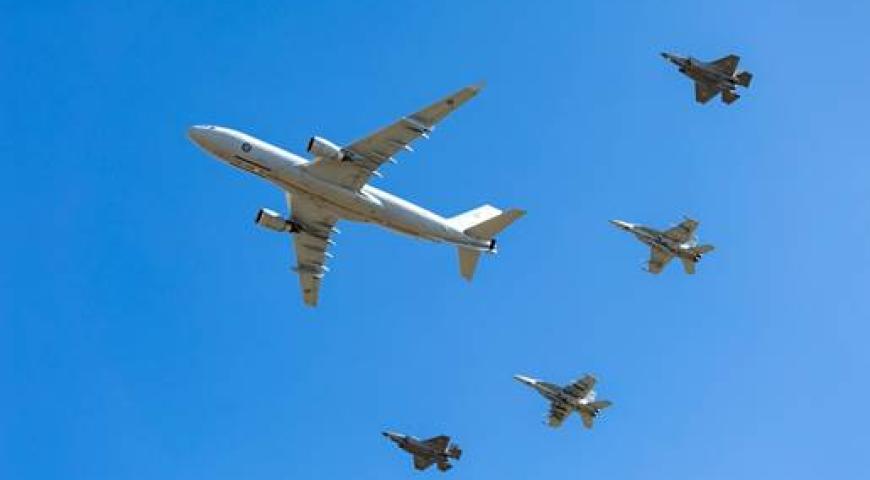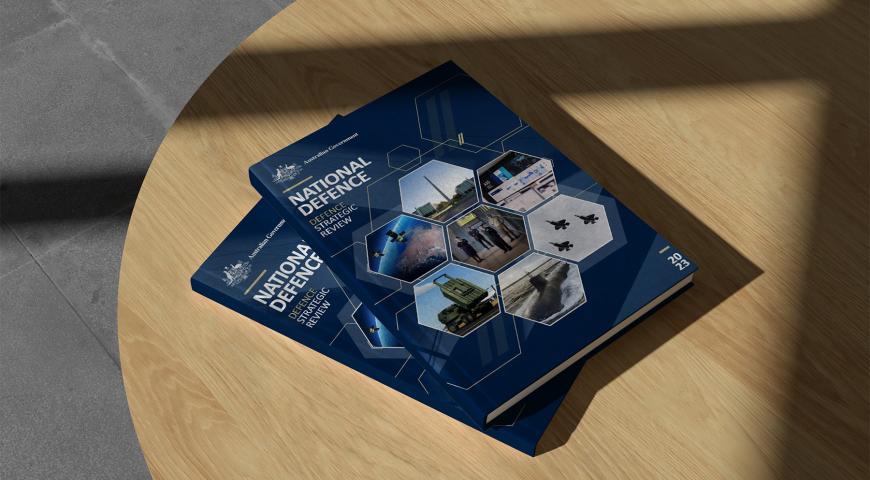For over a century, the digger legend of the First Australian Imperial Force (1st AIF) has served as a cultural artefact for both the Australian Defence Force (ADF) and broader Australian society. At the time, however, values that came to embody the digger legend such as mateship, loyalty, reckless bravery, casual insubordination and a disregard for social hierarchy were not always compatible with the expectations of British command. The demographic and socio-political characteristics of the 330,000 officers and men of the 1st AIF can go some way to explain why some British officers took issue with the Australians. So, too, do contrasts in cultural dimensions, military law, as well as the very nature of an all-volunteer corps fighting on the other side of the world.
Arguably, commanding a less-than-conventional military force during the First World War required a less-than-conventional style of military leadership. In the case of the 1st AIF, this task was shouldered by General William Birdwood. Although history remembers Birdwood as a commander popular among his men, his leadership style was criticised by other senior British officers. A question then arises as to whether Birdwood’s leadership style was effective given his unique circumstances, or whether his detractors were right to express criticism.
For King, Country and adventure
When Britain declared war on Germany at 11am 4 August 1914, Australia, as a dominion of the British Empire, was automatically at war.[1] In the following days, Australia would offer the Royal Australian Navy to the British Admiralty, as well as 20,000 men of any suggested composition.[2] Thus, the Australian recruitment effort began for the 1st AIF.
Despite Australia’s status as a newly federated nation thousands of miles from Europe, ties to the ‘motherland’ ran deep. An outward manifestation of Australia’s ties to Britain was the inclination of some men to trek for days to reach a recruitment centre.[3] From a demographic perspective, more than half the non-indigenous men living in Australia during the national census of 1911 reported their faith to be either Church of England or Presbyterian.[4] This is indicative of their British heritage. Aside from loyalty to ‘King and Country’, volunteers were also noted to have been motivated by a youthful sense for adventure, as well as a steady paycheck.
Catholic support for the war was more difficult to inspire. Australians of Irish-Catholic origin were often criticised for undermining the war effort and not doing their bit.[5] In 1916, around the time of the Easter Uprising in Ireland, Britain was warned of similar sentiment in Australia. Little over twenty-two percent of the Australian population reported following a denomination of Catholicism around this time, but this number would grow over the century to become the country’s dominant religion.
Although anti-war sentiment was observed in the Catholic community, entire sibling cohorts of the Catholic faith would volunteer throughout the course of the war. One such family were the McDonalds of Kent Street, Sydney. Brothers William, George ‘Sidney’ and Frances ‘Frank’ would see frontline active service over the ensuing years. Service records of George ‘Sidney’ indicate he served two and a half continuous years in France with the 9th Field Company, Royal Australian Engineers. He spent just three days away from his unit over this time due to an illness in mid-1918. One of his brother’s records, however, didn’t get off to a good start. While in Cape Town (en route to Europe), Frances failed to re-embark the troop ship before departure on 4 December 1916. He was deemed absent without leave, found drunk the next day and sentenced to fourteen days detention. Frances later embarked on another ship and completed his journey to the Western Front. He would be plunged into the very depths of conflict and was later treated for shell shock.[6] This embodiment of ‘work hard, play hard’ appears to be a consistent theme for many members of the 1st AIF and would come to define their place in history.
Figure 1: The McDonald brothers of the 1st AIF. PTE William McDonald (SN 3301), PTE Frances McDonald (SN 2609) and SPR George ‘Sidney’ McDonald (SN 9920) circa-1917. Image source: family collection.
Splendid fellows but very ignorant…
Some members of the 1st AIF developed disciplinary records worse than Frances McDonald. Reports of heavy drinking, desertion, attacks upon locals, robbery and sexual misconduct began to emerge as early as the first arrivals in Egypt in late-1914.[7] Australian misbehaviour in Egypt reached new heights on Good Friday 1915, when the infamous ‘Battle of Wazza’ erupted as a result of escalating tensions with prostitutes, pimps and the increased prevalence of venereal disease.[8]
Figure 2: A horse-drawn carriage passes through Cairo following the ‘Battle of Wazza’. Significant structural damage can be seen on building facades to the right of the image. Image source: Australian War Memorial.
Less than a month after Good Friday 1915, the ANZACs would find themselves storming the Gallipoli Peninsula in their first taste of real action. This campaign is generally considered a strategic failure, however it is still commemorated in Australia and abroad across countless towns and cities, as well as former battlefields. Although Gallipoli saw nine Australians awarded the Victoria Cross, reports of poor conduct in the 1st AIF persevered.[9] In fact, the question of indiscipline was significant enough for the British Secretary of the War Council, Lieutenant Colonel Maurice Hankey to assess it personally and report back to London. On 28 July 1915, Hankey wrote to then-Prime Minister Asquith from HMS Exmouth. Hankey was distinctly aware of the Australians’ reputation, telling the prime minister:
‘I do hope that we shall hear no more of the “indiscipline” of this extraordinary corps, for I don’t believe that for military qualities of every kind their equal exists. Harassed by continuous shelling as I have described, living in intense heat, tormented by flies, compelled to carry their water and most of their supplies and ammunition by hand 400 feet up the hills, and deprived of any recreation except bathing, they are nevertheless in the highest spirits and spoiling for a fight. They do not salute as much as our men, but the relations between officers and men appeared to me to be the best. I saw a good deal of this, as a cousin of mine is second in command of one of the Australian battalions and took me round…’[10]
Concerns surrounding the discipline of the Australians persisted throughout the war. Statistics reported in Haig’s war diary in early-1918 indicate that Australians were far more likely to be incarcerated than men of other British dominions. In fact, he reported that 9 in 1,000 Australian soldiers were imprisoned at that time, compared with just 1.6 in 1,000 Canadians, New Zealanders and South Africans. In addition, just 1 in 1,000 British soldiers were imprisoned at this time. Haig attributed these statistics to the inability of British officers to punish Australians to the same extent as their own countrymen.[11]
Figure 3: This clipping depicts an interaction between an Australian soldier and British officer. ‘Disgraceful harness… have you no soap?’ asks the officer. ‘No’ responds the soldier. ‘No what?’ asks the officer. ‘No soap’ responds the soldier.
The inability to severely punish Australians was only a problem when there were severe contraventions in military and civilian law. A more common issue with Australian soldiers was their irreverent regard for social hierarchy which often left British officers speechless. In his writings, Lieutenant King of 2/5th Battalion East Lancashire Regiment reflected on the informality of Australians. ‘Well we’re the Aussies, chum, and we’ve come to relieve you’.[12] Awkward encounters between perceived pompous British officers and improper Australian regard for non-Australian rank inspired a flurry of commentary, rivalry and caricatures which have since been replicated in sport and popular culture.
The right kind of leader
Despite ongoing concerns about the attitudes and behaviours of Australian soldiers, the general consensus of senior military leaders was that they were a formidable fighting force. During the Battle of the Somme in the second half of 1916, General Douglas Haig noted the ‘fine piece of work’ conducted by Australians during the campaign.[13] However, Haig also made note of his critical views of General William Birdwood, then-commander of I ANZAC Corps. In his war diary, Haig criticised Birdwood for being more interested in making speeches to the Australian rank-and-file than being useful at directing operations.[14] This sentiment, initially put to paper in 1916, appears to have lasted throughout the war. In a letter to his wife in February 1918, Haig again made reference to poor discipline among Australian ranks. He argued that Birdwood’s desire for popularity was the cause of this ill-discipline.[15]
Birdwood may have indeed been a popularity seeker. His actions after the war, such as a highly acclaimed tour of Australia and bid for a position as the country’s Governor General, could support Haig’s claims. However, a more important question is not whether Birdwood proactively sought popularity. Instead, it is better to ask if his style of leadership was the most effective way to ensure the men under his command fulfilled their objectives. After all, Australian society differed to the British in at least one significant way: social hierarchies weren’t as established. Australian soldiers were befuddled by the British tradition of distinguishing between officers and men by social class instead of merit and often responded negatively to it. Social class trumping merit in the British armed forces would be too easily perceived as the cause of major strategic blunders during the conflict. This perception would become a recurring theme in Australian accounts and dramatizations of the First World War. This gave rise to the phrase ‘lions led by donkeys’. The ‘lions’ are often portrayed as the men of the British Expeditionary Force (incorporating the 1st AIF). Meanwhile, the ‘donkeys’ were the perceptively incompetent generals.
Figure 4: William Birdwood. Image Source: Australian War Memorial
Birdwood’s leadership style may have been problematic in Haig’s eyes, but this isn’t how Hankey saw it during the Gallipoli campaign. Writing to the Prime Minister again on 14 August 1915, Hankey said:
‘Birdwood has a first-rate staff and is [the] only general here who has gained big success and impressed his personality on troops. Best chance in my opinion would be to put Birdwood in charge of whole northern area and give him free hand necessary rank being granted. I fear Hamilton will never do this on his own initiative, as Braithwaite underrates Birdwood, and rather dominates Hamilton.’[16]
General John Monash, an Australian-born officer who succeeded Birdwood as commander of the Australian Corps in 1918, was able to offer a perspective on the matter of Australian discipline in his own 1920 account of the conflict:
‘Very much and very stupid comment has been made upon the discipline of the Australian soldier. That was because the very conception and purpose of discipline have been misunderstood. It is, after all, only a means to an end, and that end is the power to secure co-ordinated action among a large number of individuals for the achievement of a definite purpose. It does not mean lip service, nor obsequious homage to superiors, nor servile observance of forms and customs, nor a suppression of individuality… modern war makes high demands upon the intelligence of the private soldier and upon his individual initiative. Any method of training which tends to suppress that individuality will tend to reduce his efficiency and value… In short, the Australian Army is a proof that individualism is the best and not the worst foundation upon which to build up collective discipline. The Australian is accustomed to teamwork. He learns it in the sporting field, in his industrial organisations, and in his political activities…’[17]
Figure 5: John Monash. Image Source: Australian War Memorial
Monash’s excerpt contrasts with the sentiment expressed in the war memoirs of David Lloyd George, Prime Minister of the United Kingdom:
‘Independent thinking is not encouraged in a professional Army. It is a form of mutiny. Obedience is the supreme virtue. Theirs is not to reason why. Orders are to be carried out and not canvassed. Criticism is insubordination. The object of discipline is to accustom men to respond to a command instantly, by instant action without thought of effect or consequence… Such an instinctive obedience to the word of command is essential to the efficiency of a body of men who have to face terror, death or mutilation in the discharge of their terrible duties.’[18]
Cultural dimensions
The recurring themes of individualism, rejection of social hierarchy and risk tolerance in the 1st AIF are reminiscent of a framework developed a half-century later by Geert Hofstede. Although impossible to survey members of the British Expeditionary Force and 1st AIF long after they are deceased, accounts from both sides suggest that as a group, Australians were far more individualistic than the British. In fact, Monash’s espoused belief that ‘individualism is the best and not the worst foundation upon which to build up collective discipline’, is an idea that would find little support in the British Army of the time.
Arguably more prevalent than the dichotomy of individualism and collectivism was the Australians’ aforementioned rejection of British social hierarchy norms. This is often referred to as power distance – a cultural dimension defined by the extent to which unequal distribution of power is tolerated by those with less of it.[19] Although disregard for authority is well established in this case study, further evidence can be observed via the mutinies conducted by Australian battalions when ordered to disband and replenish other battalions toward the end of the conflict.[20] In some cases, these mutinies were supported by officers who argued that disbanding would damage espirit-de-corps. Ironically, this sentiment could be perceived as collectivist in nature which adds a layer of complexity to the analysis of the 1st AIF’s cultural dimensions.
The third cultural dimension lending itself to the digger legend is the risk tolerance of the 1st AIF. This was an attribute observed multiple times by Haig, as well as others. Australians recklessly storming enemy positions without support features heavily in individual accounts of the conflict, including Haig’s. It becomes evident that despite the many cultural similarities between Britain and Australia, there are also many contrasts.
The outcome
Soon after Haig’s latter criticisms of Birdwood in his war diaries, Birdwood was assigned to lead the Fifth Army and Monash was promoted to take his position commanding the Australian Corps. Before year’s end, the armistice had been signed and the guns fell silent. Australian casualties as a percentage of enlisted personnel were among the highest of all participating armies, with the National Archives of Australia estimating 60,000 deaths of the approximately 330,000 who served. Many more were casualties, but the official figure has been debated in recent years, expected to be much higher than official reports.[21] Despite living on the opposite side of the planet, 330,000 Australian volunteers equates to 7.4 percent of the entire Australian population recorded in 1911, 14.3 percent of the Australian male population and 32.4 percent of the eligible male population aged between 18 and 45 years.
To this day, what would become known as the Great War (or the First World War) remains the bloodiest in the country’s history. Peacetime ushered in new challenges, namely repatriating the survivors and commencing the long process of dealing with the significant damage done to humans and the built environment.
Determining whether Birdwood’s leadership style, and the leadership styles of other commanders of the Australians, were effective in achieving the ‘ends’ mentioned by Monash requires pondering two complex questions. Firstly, are Australia’s successes in battle evidence that the leadership style was effective, or would victory have been expedited if Australians were exposed to discipline more consistent with their British comrades? Secondly, are the high levels of Australian casualties partly attributed to a lack of discipline or totally attributed to their exposure to the front line in some of the war’s bloodiest battles?
Figure 6: Caricature depicting the difficulties officers had with the fierce independence of Australian troopsImage credit: ID 132595813 © Ktarrier | Dreamstime.com
[1] As a dominion of the British Empire, Australia was automatically at war when Britain declared it https://www.awm.gov.au/media/kits/britain-declares-war-germany
[2] ABC News, World War I: How Australia reacted to the outbreak of conflict, (2014) https://www.abc.net.au/news/2014-08-04/world-war-i-australian-reaction-to-outbreak-of-conflict/5603588
[3] Harvey Broadbent, Charles Bingham: Interviews with Gallipoli veterans for the ABC education programme 'Behind the News', (1985) https://www.awm.gov.au/collection/F09375/
[4] Commonwealth of Australia, Census of the Commonwealth of Australia, (1911 and 1991)
[5] Alex Salmon, Australians' hidden opposition to WWI revealed, (2013) https://www.greenleft.org.au/content/australians-hidden-opposition-wwi-revealed
[6] Australian Military Forces, Attestation Paper of Persons Enlisted for Service Abroad, (Sydney, 1916), accessed records via the National Archives of Australia
[7] Charles Bean, Volume I – The Story of ANZAC from the outbreak of war to the end of the first phase of the Gallipoli Campaign, May 4, 1915, (Sydney, 1941) https://s3-ap-southeast-2.amazonaws.com/awm-media/collection/RCDIG1069880/document/5519354.PDF
[8] Alison Wishart, Good Friday, 1915, (2015) https://www.awm.gov.au/articles/blog/good-friday-1915
[9] Australian War Memorial, Gallipoli VCs, (2009) https://www.awm.gov.au/visit/exhibitions/bravemen/detail
[10] Copy of letter dated 28 July 1915 from Sir Maurice Hankey to the Prime Minister, accessed at the University of Oxford Weston Library (MS. Asquith 28)
[11] Douglas Haig, Douglas Haig: War Diaries and Letters 1914-1918, (London, 2005), 871
[12] Lyn MacDonald, They Called it Passchendaele: The Story of the Third Battle of Ypres and of the Men who Fought in it, (London, 1978)
[13] Douglas Haig, Douglas Haig: War Diaries and Letters 1914-1918, (London, 2005), 487
[14] Douglas Haig, Douglas Haig: War Diaries and Letters 1914-1918, (London, 2005), 511
[15] Douglas Haig, Douglas Haig: War Diaries and Letters 1914-1918, (London, 2005), 869
[16] Letter dated 14 August 1915 from Sir Maurice Hankey to the Prime Minister, accessed at the University of Oxford Weston Library (MS. Asquith 28)
[17] John Monash, The Australian Victories in France in 1918, (Melbourne, 1920)
[18] War Memoirs of David Lloyd George Vol 2
[19] Geert Hofstede’s Cultural Dimensions Theory
[20] Charles Bean, Official History of Australia in the War of 1914–1918, (1941)
[21] David Noonan, Why the numbers of our WWI dead are wrong, (2014) https://www.smh.com.au/opinion/why-the-numbers-of-our-wwi-dead-are-wrong-20140428-zr0v5.html
Defence Mastery
Social Mastery
Clash of Cultures: The Digger Legend of the First Australian Imperial Force © 2020 by . This work is licensed under CC BY-NC-ND![]()
![]()
![]()
![]()
Please let us know if you have discovered an issue with the content on this page.
Comments
Start the conversation by sharing your thoughts! Please login to comment. If you don't yet have an account registration is quick and easy.










